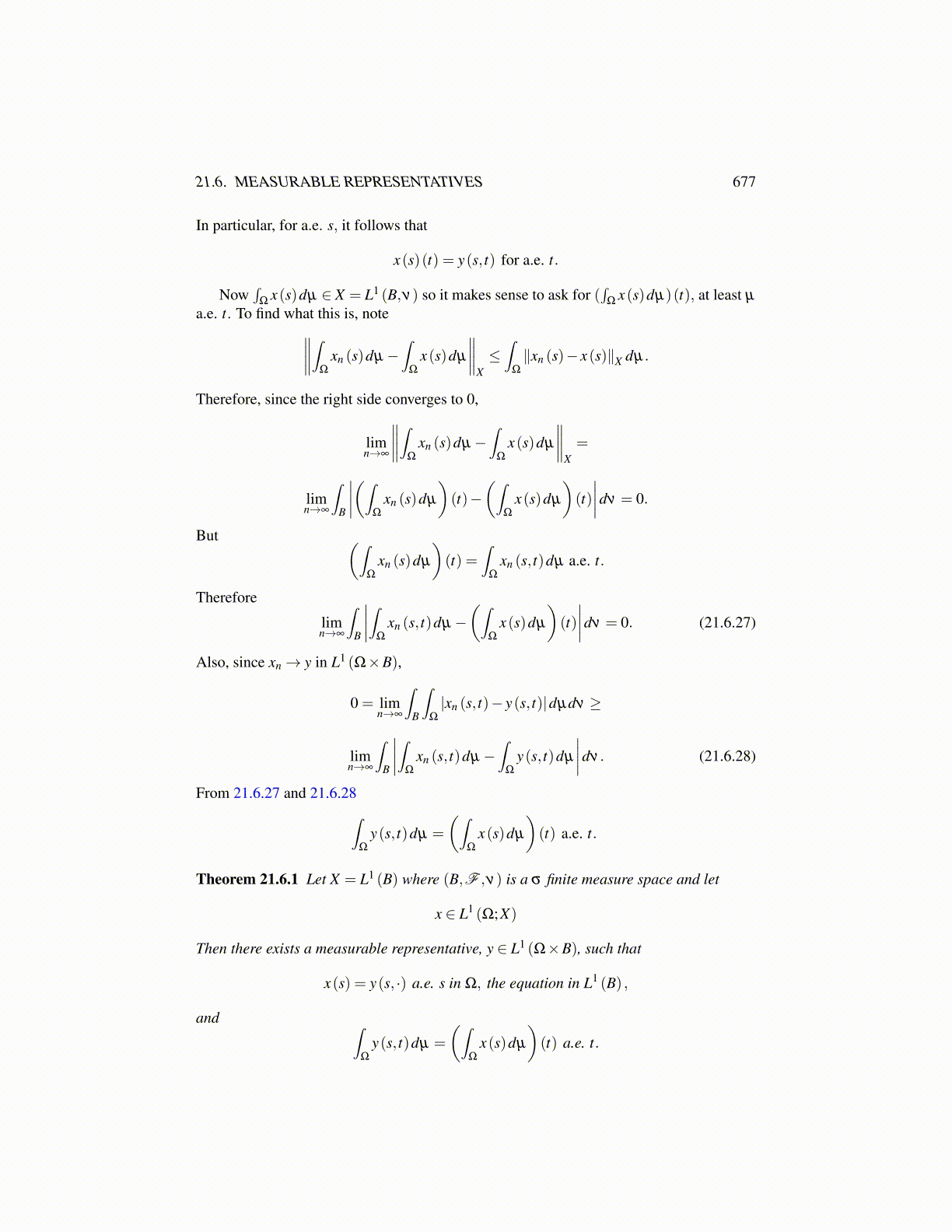
21.6. MEASURABLE REPRESENTATIVES 677
In particular, for a.e. s, it follows that
x(s)(t) = y(s, t) for a.e. t.
Now∫
Ωx(s)dµ ∈ X = L1 (B,ν) so it makes sense to ask for (
∫Ω
x(s)dµ)(t), at least µ
a.e. t. To find what this is, note∥∥∥∥∫Ω
xn (s)dµ−∫
Ω
x(s)dµ
∥∥∥∥X≤∫
Ω
∥xn (s)− x(s)∥X dµ.
Therefore, since the right side converges to 0,
limn→∞
∥∥∥∥∫Ω
xn (s)dµ−∫
Ω
x(s)dµ
∥∥∥∥X=
limn→∞
∫B
∣∣∣∣(∫Ω
xn (s)dµ
)(t)−
(∫Ω
x(s)dµ
)(t)∣∣∣∣dν = 0.
But (∫Ω
xn (s)dµ
)(t) =
∫Ω
xn (s, t)dµ a.e. t.
Therefore
limn→∞
∫B
∣∣∣∣∫Ω
xn (s, t)dµ−(∫
Ω
x(s)dµ
)(t)∣∣∣∣dν = 0. (21.6.27)
Also, since xn→ y in L1 (Ω×B),
0 = limn→∞
∫B
∫Ω
|xn (s, t)− y(s, t)|dµdν ≥
limn→∞
∫B
∣∣∣∣∫Ω
xn (s, t)dµ−∫
Ω
y(s, t)dµ
∣∣∣∣dν . (21.6.28)
From 21.6.27 and 21.6.28∫Ω
y(s, t)dµ =
(∫Ω
x(s)dµ
)(t) a.e. t.
Theorem 21.6.1 Let X = L1 (B) where (B,F ,ν) is a σ finite measure space and let
x ∈ L1 (Ω;X)
Then there exists a measurable representative, y ∈ L1 (Ω×B), such that
x(s) = y(s, ·) a.e. s in Ω, the equation in L1 (B) ,
and ∫Ω
y(s, t)dµ =
(∫Ω
x(s)dµ
)(t) a.e. t.